I want to measure car battery currents in high resolution and in wide range and both directions (including engine start and charging currents).
I don't need very high precision measurement, but I want high resolution.
I decided to use large 600A/60mV 0.5% accurracy shunt.
I have lots of amazing Microchip MCP3424 4 channel ADCs in my workshop, it's my favourite ADC and I want to use it.
I figured out, that typical op-amp in differential mode is bad idea, it produces a lot of error (offset voltage error? noise?). It's too hard for me to get reasonable precision witch such low resistance shunt and general purpose op-amp.
There are auto-zero, low noise, low offset amplifiers, dedicated differential amplifiers, but my op-amp knowledge is not enough to make use of them, but I found that there is easier way - dedicated current monitor amplifiers.
My general idea looks like this (sorry for Paint drawing):

Questions:
Which op amp for current sensing can I use? Price limit 3-5USD.
How to use it? Can I power it from USB, and measure current in another circuit?
I've seen datasheets, I've seen this:
Need help with circuit design for current measurement of car starter
But I'm not sure how to connect op amp power, ground etc.
Edit:
- I realized that I don't need high side current sensing.
- I made this incomplete schematic. Can someone help to fill it up?

simulate this circuit – Schematic created using CircuitLab
